Browse topics to discover great lists from Benable creators

Restaurants where I would eat as a former restaurant manager and restaurants that I wouldn't go near.
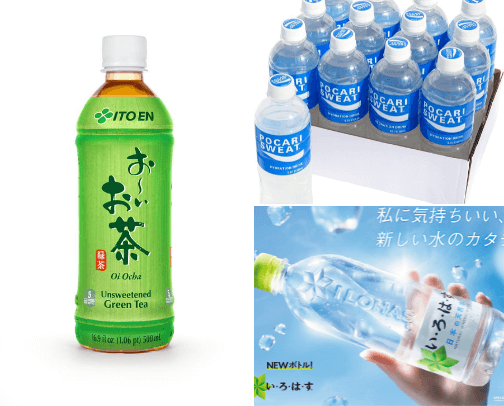
Honestly, Japanese drinks are my passion, not only cause they are so accessible but also because they taste great! Whether you're shopping in Don Quijote or Family Mart, browsing one of the thousands of vending machines, or trying to figure out which drinks to stock up on in your country, you should know some of these drinks from the best to the weirdest!

Being vegan doesn't mean you have to let go of your prepackaged, ready to eat meals or junk food 🍩🍛 here's a bunch of them I buy and eat consistently 😀 the majority of these can be found at whole foods 💕

Curb your pasta addiction with these tasty alternatives

The Riiche Holy Grail Groceries are here! Get out your shopping list and pack your pantry with these staples. We all need quick and easy meals, so try these items and make something special.

Less harmful ingredients so you don't have to worry about the food your eating slowly killing you. Plus they're protein packed and less sugar.

Local Restaurants to get you ready for Taco Tuesday! DFW Edition!

Looking for a refreshing twist to your everyday smoothies? These are my top tasty smoothie recipes that will not only quench your thirst, but also provide you with an array of nutrients.

Get ready to stuff your face in Italy with real Italian food at authentic locations!

some of my favorite meals to make when I have a crazy day!

Clean snacks I love without refined sugar, seed oils, chemicals, gluten, dairy, and convential animal products

Not included here is Speck which is something you will need to get from a local butcher or meat shop. Check out the full recipe here.

As a professional chef this will be my recommendations for at home gear that i rate very highly, lots of which i personally use, some i just know of the quality that the product brings

I am a big vegan foodie. These are the spots I've enjoyed on the Atlanta scene.

My favorite restaurants in San Francisco

Fun fact: I used to have a small cake business and, although I no longer sell my cakes, decorating them will always be a love of mine. The following is a list of essential items for any cake decorator. Have fun!

Sharing all the delectable delights I find on all my adventures - big and small!

As a busy mom on a budget who also eats gluten free, here is what I typically buy at Walmart for my family. Hope this inspires you!

As a professional cook trained in one of the best Michelin-starred restaurants in Los Angeles, these are some of my favorite tools that have helped me get through my toughest days on the line. You don’t need all of these things to be successful, these are just my personal tried and true. (Please note: some of these links are affiliate links, which means I receive a small commission if you decide to purchase through my page. Thank you!)

Coffee pairs well with just about anything, but especially well with a farm! As a self-proclaimed Feral Farm Manager, those steamy sips of coffee offer a momentary escape from the chaos. Just remember, sanity is brewed one cup at a time!

Being gluten free isn't always easy but these are my go-to products for delicious GF meals and treats!

Grab your apron and get ready to knead, because I'm about to take you on a delicious journey! Discover the joys of baking breads from all corners of the globe with this list of artisan bread recipes.

All of the baking essentials to make baking bread and sweet treats

Below are some foods that have several health benefits covering cardiovascular, gut, immune, etc.

Meal kit delivery services offer a convenient solution to access quality, nutritious meals that are carefully curated and portioned, ensuring a balanced and healthy diet without the need for extensive meal planning or grocery shopping. By streamlining the cooking process and reducing food waste, meal kits also help you save valuable time and money in your busy everyday life.

These are some of the Best restaurants in Ascension Parish Louisiana. Some home cooking meals you get at a restaurant.

My favorite items for my morning matcha latte! These are my curated ingredients and tools, with the Ube and Spirulina ingredients for if you want to get fancy with your morning drink.Disclaimer: I work for and am invested in Chamberlain Coffee.

Cooking in a overheated kitchen is not fun. Try these time saving items- it doesn't matter if you are cooking for 2 or 35 people. Here's some of my favorite summer kitchen essentials and recipes.

Eating and making pizza - I love Pizza!

Hi there! I've been Gluten Free (sensitivity not Celiac) for 11 years! I've spent lots of money and tested lots of items (some were pretty dank!) I look for quality items that are easily accessible without breaking my wallet! Here are the best products that are my go-to's! Enjoy!

LA is a big town, and everyone has their favorite spots. These are mine and I frequent them a lot. Everything listed ranges from West Hollywood to Santa Monica.

The ultimate gift guide for coffee lovers. From fun mugs to helpful tools, here's everything you need to give the gift of everyone's favorite: COFFEE.

I live on Oahu and these are my favorite places to eat & recommend to visitors.

What's better than ice cream? Homemade cream! These products will get you making homemade ice cream in no time!

This is a wonderful time of year for anyone that loves pumpkin. You can find almost any thing you want in pumpkin flavor or scent. I will bring up some finds for you that are everything pumpkin.

Coffee snob here! A few of my favorite coffee essentials in one place!

Explore our curated collection of perfect gifts for foodies. From gourmet ingredients and artisanal treats to stylish kitchen gadgets and cookbooks, this selection has something for every culinary enthusiast. Whether you're shopping for a home chef, a baking enthusiast, or a food lover who enjoys the finest flavors, you'll find the ideal present to delight their taste buds. Discover unique and thoughtful gifts that will make any foodie’s day special.

Yes, I did try the pod method but I found it to be so wasteful. This is the best coffee machine out there and my favorite coffees and teas. I am someone who drinks coffee EVERYDAY and sometimes more than once. So I like for my coffee bar to be stacked with mugs, sugars, and accessories. I know the coffee lovers out there will appreciate this list. Also, if you have a coffee that is delicious don't gatekeep girl. Comment and let me know!!

Hello friends. Sharing some of my favorite dessert spots in the SF Bay Area. Some has delivery and some don't, but I always recommend eating it there so it's most fresh and doesn't mess up the decoration! If you happen to be in the area, feel free to give these a try and it might blow your mind :)

Below find some of the spots I have been to throughout the years. My go to orders are usually iced coffee with hazelnut and almond milk. However, I will always try the specialty drinks and matcha is growing on me! Enjoy and feel free to comment if you want me to add more areas

The tea aisle in a grocery store can be overwhelming! They're often sorted by brand and have all sorts of teas mixed together, making it difficult to find one you think you'll enjoy without spending some serious time searching and reading labels. This list is designed to make it easy to find a tea you'll enjoy, focusing on unique flavors and approachable blends for people who are new to drinking tea. :)

Uncover the eatery gems of our community through a lifetime local's lens! Dive into the heart of passion that defines our area's rich and ongoing stories of food and spirits!

Blackstone grills guarantee exceptional quality and unparalleled versatility in your outdoor cooking experience. Its robust construction and innovative design make it a must-have for grilling enthusiasts, delivering mouthwatering results and endless culinary possibilities with every use.

Guess what I just discovered? The holy grail of family meal planning: healthy dishes ready in under 30 minutes! Seriously, it's a game-changer for busy weeknights. I've been trying out these recipes and they're not only quick but super delicious too. Just Google "healthy family meals under 30 minutes" and get ready to have dinner sorted in no time!

Houston foodies! Here to share a mixture of favorite resteraunts for different occasions. :) Brunch, Family dinners, date night, girls night, and amazing food options!

As a mom, cooking the same thing day in and out gets boring. I am always looking for new recipes and ways to spice up dinner time.

When it comes to grocery shopping in this day and age, it's extremely important to save where you can! Having multiple kids with different likes and dislikes when it comes to food is hard. Well it can be hard if you haven't found me yet! With my crew a few are picky as hell, so I use to struggle finding recipes they would actually eat and sneak those veggies in there I can. Trust me they won't be able to tell the difference! In this list you will find all my go to's when it comes to the grocery store, with some added recipes that my kids love ❤️

Here are some tasty foods that not only tantalize your taste buds, but also naturally detox and cleanse your body. I try to incorporate some of these weekly!

I'm a professional chef of over 20 years. Always looking for new products to making home cooking easier, quicker and fun!

A round up of quality cafes & restaurants I visited and recommend in Chiang Mai serving delicious food, desserts & beverages!🍴Vegetarian friendly places 🌱

Liquids/powders that have clean ingredients and are super beneficial to help balance hormones, support the liver, etc. that I drink on the regular

Tired of coming the same old thing? Here are some ideas to change up your dinner menu.

It's almost the start of grilling season. Here are a few things to add to your list for your festivities to go off without a hitch!

I have to say, there’s nothing quite like the nostalgic charm of a grilled cheese sandwich to whisk you back to the simple joys of childhood. I remember those lazy weekend afternoons, tucking into a melty grilled cheese made with those classic Kraft slices sandwiched between fluffy white bread, often paired with a steamy bowl of tomato soup. But as we've grown, so has the grilled cheese. It has evolved into a gourmet delight with endless variations—artisan bread, a mix of cheeses, and even some avocado or bacon for a modern twist. I think it’s safe to say, we've truly perfected this comforting classic.

This list is for the coffee fanatic who wants to start making their favorite cafe beverages from home!

Welcome to the "Everywhere We Ate in Las Vegas" board, your ultimate culinary guide to the vibrant and diverse dining scene of Las Vegas. Whether you're a foodie seeking extraordinary gastronomic experiences or simply looking for delicious recommendations to satisfy your taste buds, this board is here to take you on a mouthwatering journey through the city's culinary landscape. Las Vegas is renowned for its world-class restaurants, celebrity chef establishments, and a wide array of international cuisines. From extravagant fine dining to casual eateries, this board showcases the diverse range of culinary delights you can discover during your visit to the entertainment capital of the world. Explore the iconic Las Vegas Strip, where you'll find a dazzling collection of dining options. Indulge in innovative creations from renowned chefs, from gourmet French cuisine to sizzling steakhouses that offer the finest cuts of meat. Discover hidden gems off the beaten path, where local chefs blend flavors from around the world to create unique and memorable dining experiences. Sample the vibrant flavors of global cuisines, with restaurants offering authentic dishes from Italy, Japan, Mexico, Thailand, and beyond. Whether you're craving sushi, tapas, dim sum, or mouthwatering tacos, Las Vegas has it all. Delight in the fusion of flavors and cultural influences that make the city a true culinary melting pot. Don't miss the chance to try the city's famous buffet experiences, where you can feast on an endless array of international dishes, seafood delicacies, and decadent desserts. From extravagant spreads at luxurious resorts to more affordable options, the Las Vegas buffet scene offers something for every appetite and budget. Immerse yourself in the vibrant food scene beyond the Strip, where you can explore neighborhoods like Chinatown, Downtown Las Vegas, and Summerlin. These areas are home to a wide range of eateries, including cozy cafés, trendy gastropubs, and local hotspots serving up delectable comfort food. Discover the creativity of Las Vegas's dessert and pastry scene, with dessert bars, bakeries, and patisseries offering sweet delights that will tantalize your taste buds. Indulge in exquisite cakes, artisan chocolates, and inventive treats that showcase the city's commitment to culinary innovation. Whether you're seeking a memorable fine dining experience, a quick bite between casino visits, or a late-night feast to satisfy those midnight cravings, the "Everywhere We Ate in Las Vegas" board has got you covered. Let it be your trusted guide to navigate the city's diverse culinary landscape and ensure that every meal in Las Vegas is a truly unforgettable one. So, prepare your taste buds for an extraordinary gastronomic adventure. Let the "Everywhere We Ate in Las Vegas" board inspire you to explore the city's culinary gems and savor the incredible flavors that make Las Vegas a top destination for food enthusiasts. Bon appétit!
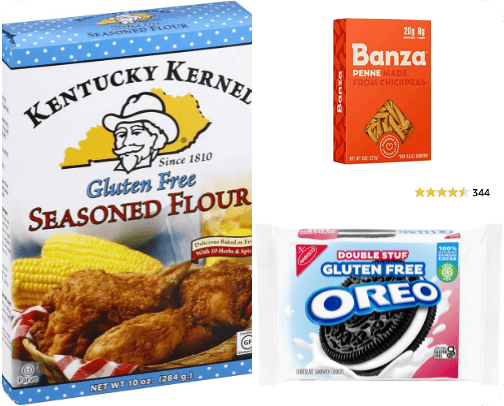
All the things you will find in my kitchen and pantry to keep me living happily gluten free! This collection includes baking and cooking staples and snacks!

I have visited most of these destinations. I love the wide range of options, including restaurants, cafes, bistros, diners, pubs, and eateries of various cuisines and styles. They often offer diverse menus, ambiance, and service experiences, catering to different preferences and occasions. Dining destinations are not only places to satisfy hunger but also spaces for socializing, celebrating, and experiencing the art of cooking and hospitality. Whether it's fine dining, casual dining, or grab-and-go options, dining destinations play a significant role in the culinary landscape of a city or region.

Great Selection of "back up" Food

The kitchen serves as the central hub of the home because it fosters connection, nourishment, and creativity, bringing family and friends together while providing a space for cooking, dining, and bonding.

Here are my FAVOURITE restaurants in the places I have lived

My husband's family has gone to Disney World every year for 27 years. I started going in 2015 when we started dating. Both of kid's first time in Disney World was at 4 months. So... we're basically experts 🤷🏽♀️lol

No matter what kind of foodie you're shopping for, this list has got you covered. It features a variety of gift ideas for foodies - people who love to cook, eat, and experiment with food. From trendy kitchen gadgets and gourmet food and drink products to classic cookbooks and food-themed gifts, this list has something for everyone. No matter what kind of foodie you're shopping for, this list has got you covered.

I have been cooking and baking (and eating a lot 😏) ever since I was a kid and it is a passion of mine that I also really love to share with others. I'm starting to collect a variety of resources, tools, and books that I have encountered and found helpful or interesting throughout my cooking journey so far. Enjoy!

If you know me, you know that I enjoy going to coffee shops. They're where I feel most creative and inspired about many things. I'll be adding to this list as I explore more in the city! <3 Enjoy.

A compilation of recipes that will warm your soul and lift your spirits through the cold months.

Hey there, fabulous friends! Are you on a mission to clean up your eats and ditch the sugar without sacrificing flavor? Look no further! Dive into my treasure trove of Paleo-ish delights featuring brands I love and trust. From crave-worthy snacks to decadent treats, I've handpicked the best replacements to satisfy your sweet (or savory) tooth guilt-free. Think mouthwatering options from Hu Kitchen, RXBAR, Primal Kitchen, and more! It's time to upgrade your snack game and embrace a healthier, happier you. Let's indulge in deliciousness without the sugar crash—because you deserve it, friend! Alternatives for snacks with less or no sugar and healthier ingredients. Great for AIP, Paleo, gluten-free or grain-free, and diabetics.

From supplements to pizza crusts, here you'll find everything that's high in protein.

these meals make great options for people wanting to lower their blood cholesterol levels. Use leftover cooked barley to make our satisfying Bean & Barley Soup. And try our One-Pot Chicken with Farro when you need something with simple instructions, but complex flavors.

I love Lemons and Blueberries, so the thought of pairing these two flavors together was so genius!

Can't do syrups, but want something more than just basic coffee? Try these flavored coffee options. Flavored coffees are notorious for having a great smell in the bag, but lack the flavor transfer to the final brewed cup. This list is comprised of the companies and the flavors I have had the best luck with.

Say goodbye to food that doesn't quite fill you up and leaves you feeling gross an hour after and say hello to nutrition that loves you back! Here's a list of my favorite switches I made that keep me full and feeling good about the food I intake

a list of DMV eats where the food is delicious and the ambiance is top tier! there are restaurants & coffee shops on this list so give em all a try & let me know what you think!!

Tired of buying coffee everyday. Well I got the solution for you. Make your at home coffee with all my favorites. I saved a lot of money but making coffee at home and it even taste better!!

Nothing brings people together like a great meal, and since you're coupled up, you might as well create some great moments together! Here are some things to help you along the way.

As someone who is trying to maintain better gut health, switching to gluten and dairy-free foods have helped so much in the process, personally. I created this list to help you in finding groceries that you'll enjoy without sacrificing flavor while improving your health!

I am a dessert girl all the way,and i love making them and even better if the whole family can get involved in making them too.

Many people find the need to reduce or eliminate gluten in their diet. The claimed benefits of a gluten free diet are improved health, weight loss and increased energy. For those with gluten-related medical conditions, finding alternatives can be vital. These are some foods that I have found that are gluten free.
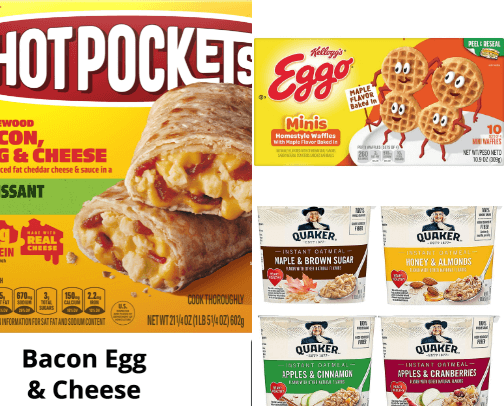
These are so easy your kids can make their own breakfast and all within 2 minutes or less

Sometimes you just need a spot to post up for a bit while out and about - I've visited enough coffee shops in the various neighborhoods in Pittsburgh that I can recommend a few!

A collection of the most unforgettable meals, restaurants, and dining experiences. From hole-in-the-walls to some of the best restaurants in the world.

Here you will find some amazing items for outdoor grilling. I don't think anyone can say no to a good barbecue. Unless you don't enjoy good food, good times, and culinary adventures. If that's you…I'm sorry. I can't help you :)

There are millions of lollies/candy's out there, I am simply helping you find some hidden gems in the market
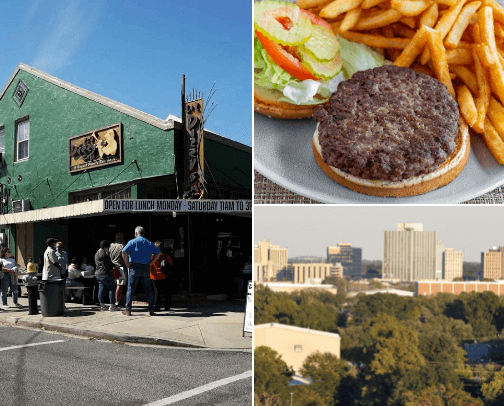
These places are a must have experience in New Orleans and West Bank area got to visit these spots

Our family loves to cook on our blackstone!! Here is a list of all the things we use to help maintain and making cooking fun on the blackstone!

This bread comes together so fast and easy! See the full instructions and video here.
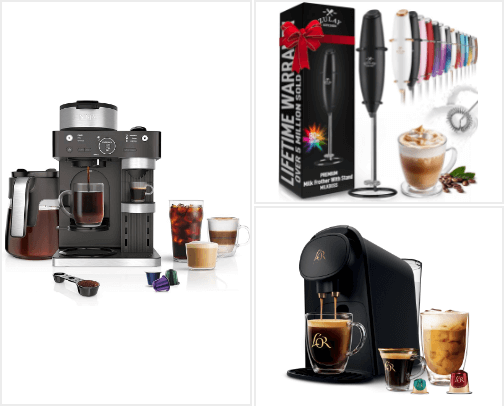
"Sip and Savor: Unleash Your Inner Barista with Java Essentials" is your passport to a world of exquisite coffee experiences that will awaken your senses and elevate your daily rituals. This expertly curated list is a treasure trove of must-have coffee products designed to turn your home into a delightful coffee haven. From innovative coffee maker machines to artisanal beans and brewing accessories, these fabulous finds promise to make every sip a journey of flavor and aromas. Whether you're a seasoned coffee connoisseur or just starting to explore the world of coffee, these remarkable discoveries will help you craft coffee that's not just a morning routine, but an engaging and enchanting affair. Say goodbye to ordinary coffee and welcome the sheer delight of unleashing your inner barista. With "Sip and Savor," you'll uncover the secrets to becoming a coffee master, ensuring that each cup is a masterpiece of flavor, precision, and pure coffee satisfaction.

Dive into the rich array of culinary delights that Bekasi has to offer as I share my favorite dining spots in this bustling city. From beloved local eateries to hidden gems, get ready to indulge in a diverse selection of flavors that capture the essence of Bekasi's vibrant food scene.

Over the years I've experimented with different coffee rituals to start the day with as many nutrients as possible. As a 3rd-gen vegetarian, getting enough fat and protein can be challenging. This is the recipe that has stayed in my morning routine for years. As I get older, I add new ingredients to see how far I can push it while still making a cup of coffee that I can look forward to drinking every morning!

Perfect and fun snack ideas that kids will love. Use the design as inspo or follow it exactly. For snack time at home or in class.

I'm a big coffee lover and I love finding new coffee places to try. Here are my favorite cute coffee nooks in the area.

Plastics are a problem. They not only pollute our planet, but they are harmful to our bodies. Considering plastics are everywhere in food production and storage, this is a difficult and confusing issue. Here's some general Information About Plastics and Food Rating System for Plastic Safety in Food Use * Safe for Use (Recyclable, Low Risk of Chemical Leaching): HDPE (2), LDPE (4), PP (5) * Use with Caution (Potential Chemical Leaching, Single Use Recommended): PET (1) * Avoid (High Risk of Harmful Chemical Leaching): PVC (3), PS (6), Other (7) Resources 1. FDA - Food Contact Substances 2. Environmental Protection Agency (EPA) - Plastics 3. Health Canada - Chemicals in Plastics 4. National Institute of Environmental Health Sciences (NIEHS) - BPA 5. American Chemistry Council - Plastics Guide to Common Plastics in Food Preparation, Sales, and Storage 1. Polyethylene Terephthalate (PET or PETE) * Common Uses: Beverage bottles, salad dressing bottles, peanut butter jars. * Properties: Lightweight, strong, shatter-resistant. * Safety: Generally safe for single-use; not recommended for reuse due to potential leaching of chemicals. * Recycling Code: 1 2. High-Density Polyethylene (HDPE) * Common Uses: Milk jugs, detergent bottles, juice bottles, cereal box liners. * Properties: Sturdy, resistant to impact, less prone to leaching. * Safety: Considered safe and has a low risk of leaching chemicals. * Recycling Code: 2 3. Polyvinyl Chloride (PVC) * Common Uses: Cling wrap, plastic squeeze bottles, cooking oil bottles. * Properties: Flexible, clear, can release harmful chemicals if heated. * Safety: Contains harmful chemicals like phthalates; avoid for food use if possible. * Recycling Code: 3 4. Low-Density Polyethylene (LDPE) * Common Uses: Bread bags, frozen food bags, some food wraps. * Properties: Flexible, tough, resistant to acids and bases. * Safety: Generally safe, but less sturdy for reuse. * Recycling Code: 4 5. Polypropylene (PP) * Common Uses: Yogurt containers, syrup bottles, straws, bottle caps. * Properties: Tough, resistant to heat. * Safety: Considered safe and has a high melting point. * Recycling Code: 5 6. Polystyrene (PS) * Common Uses: Disposable coffee cups, plastic food boxes, plastic cutlery. * Properties: Lightweight, insulating, can release styrene, a potential carcinogen. * Safety: Not considered safe for prolonged food contact or heating. * Recycling Code: 6 7. Other (Includes Polycarbonate, BPA, and other plastics) * Common Uses: Baby bottles, sippy cups, water cooler bottles. * Properties: Varies; includes BPA, which is a chemical of concern. * Safety: Can leach harmful chemicals like BPA; avoid if possible. * Recycling Code: 7 Microplastics in Food Preparation and Storage What Are Microplastics? Microplastics are tiny plastic particles less than 5mm in size, often resulting from the breakdown of larger plastic items. They are prevalent in the environment and can be found in various food and water sources. Sources of Microplastics * Breakdown of Larger Plastics: Over time, larger plastic items degrade into smaller particles. * Plastic Packaging: Wear and tear of plastic packaging materials can release microplastics. * Plastic Utensils and Containers: Regular use and cleaning of plastic food containers and utensils can contribute to microplastic shedding. Health Concerns * Ingestion: Microplastics can enter the human body through consumption of contaminated food and water. * Chemical Exposure: Microplastics can carry harmful chemicals that may leach into food and beverages. * Potential Risks: The long-term health effects are still being studied, but concerns include inflammation, toxicity, and hormonal disruptions. Reducing Microplastic Exposure * Avoid Single-Use Plastics: Use alternatives like glass, stainless steel, or ceramics for food storage and preparation. * Choose Safer Plastics: Prefer HDPE (2), LDPE (4), and PP (5) which are less likely to shed microplastics. * Proper Handling: Avoid heating food in plastic containers and minimize contact with acidic or oily foods that can promote leaching. Rating System for Plastic Safety in Food Use * Safe for Use (Recyclable, Low Risk of Chemical Leaching): HDPE (2), LDPE (4), PP (5) * Use with Caution (Potential Chemical Leaching, Single Use Recommended): PET (1) * Avoid (High Risk of Harmful Chemical Leaching): PVC (3), PS (6), Other (7) Resources 1. FDA - Food Contact Substances 2. Environmental Protection Agency (EPA) - Plastics 3. Health Canada - Chemicals in Plastics 4. National Institute of Environmental Health Sciences (NIEHS) - BPA 5. American Chemistry Council - Plastics 6. World Health Organization (WHO) - Microplastics in Drinking Water These resources provide detailed information on the safety and use of plastics in food-related applications, regulations, and health impacts, including the emerging concern of microplastics. Key Points * Recycling Code ≠ Safety Indicator: The recycling code indicates the type of plastic, not its safety. For example, while #1 PET is recyclable and commonly used for beverages, it's not necessarily safe for repeated use due to potential leaching. * Safe for Food Use: Generally, plastics labeled with #2 (HDPE), #4 (LDPE), and #5 (PP) are considered safer options for food storage. * Potential Risks: Plastics labeled with #3 (PVC) and #6 (PS) have higher risks associated with chemical leaching and should be avoided for food contact. Code #7 varies widely in composition and safety, so it's essential to check the specific type of plastic. Conclusion While the recycling coding system provides valuable information for recycling purposes, it should not be solely relied upon to determine the safety of plastics for food storage and preparation. Always look for additional information regarding the specific plastic's suitability for food contact, and prefer products explicitly labeled as food-safe, BPA-free, and compliant with relevant safety standards. What is BPA Bisphenol A (BPA) is an industrial chemical used primarily in the production of certain plastics and resins. It has been widely utilized since the 1960s. BPA is a key component in the manufacture of polycarbonate plastics and epoxy resins. Uses of BPA 1. Polycarbonate Plastics: * Common Items: Water bottles, food containers, baby bottles, and eyewear lenses. * Properties: Polycarbonate plastics are durable, clear, and lightweight. 2. Epoxy Resins: * Common Applications: Coatings inside food and beverage cans, dental sealants, and composite fillings. * Properties: These resins provide a protective lining to prevent corrosion and contamination. Health Concerns BPA is known to be an endocrine disruptor, meaning it can interfere with the body’s hormone systems. Studies have shown that BPA can mimic estrogen, a hormone that plays a critical role in many bodily functions. This mimicry can lead to various health issues, particularly with prolonged exposure. Potential Health Effects: * Reproductive Health: BPA exposure has been linked to reproductive issues, including reduced fertility in both men and women. * Developmental Problems: Prenatal and early-life exposure to BPA may affect brain development and behavior in children. * Hormonal Disruptions: BPA can interfere with the normal functioning of the endocrine system, potentially leading to conditions such as diabetes, obesity, and cardiovascular disease. * Cancer Risk: Some studies suggest a possible connection between BPA exposure and an increased risk of certain cancers, particularly breast and prostate cancer. Regulatory Actions and Recommendations Due to health concerns, many countries have implemented regulations to limit BPA use, particularly in products intended for infants and young children. For instance, BPA is banned in baby bottles and sippy cups in the European Union, Canada, and the United States. Recommendations for Consumers: * Avoid Polycarbonate Plastics: Look for BPA-free labels on products. Polycarbonate plastics can often be identified by the recycling code #7, although not all #7 plastics contain BPA. * Use Alternatives: Consider using glass, stainless steel, or BPA-free plastics for food and beverage storage. * Limit Canned Foods: Reduce consumption of canned foods and beverages, as the inner linings of cans may contain BPA. Opt for fresh or frozen foods or those in BPA-free packaging. * Avoid Heat: Do not microwave polycarbonate plastics or wash them in the dishwasher, as heat can increase the likelihood of BPA leaching. Conclusion BPA is a widely used chemical in the production of certain plastics and resins, but it poses potential health risks due to its endocrine-disrupting properties. To minimize exposure, consumers should opt for BPA-free products and consider alternative materials for food and beverage storage. Regulatory measures continue to evolve to protect public health from the potential dangers of BPA.

I have a HUGE sweet tooth and enjoy making homemade desserts. Here a just a few of my favorite recipes!

Below I will recommend the best grocery stores, brands and fruits and veggies.

Let's face it, summer can be brutal especially if you live in Texas. I'm going to share my favorite easy go to drinks to keep me cool and won't break the bank! Plus I will give you a few kid friendly recipes as well as items for your creations to go in 😉

Get access to healthy food options that won't break your wallet. I love misfits market

